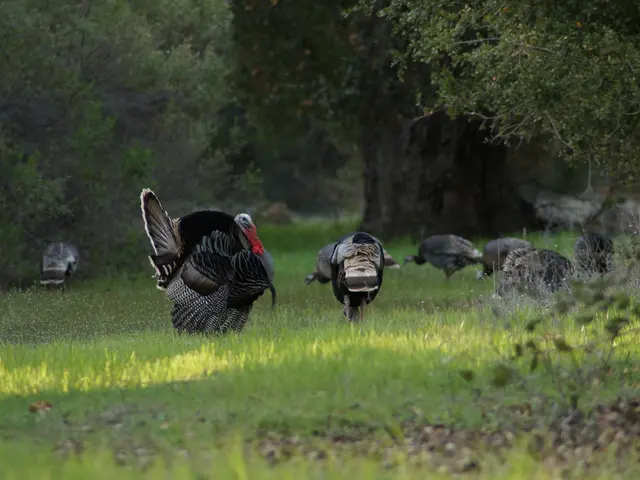Harnessing Renewables for Sustainable Agriculture through Smart Solutions
In the world of modern agriculture, innovation is at the forefront, and one area that's gaining significant attention is the integration of renewable energy sources into smart farming solutions. This article will delve into the steps and considerations involved in this transformative process.
The renewable energy sources under assessment are solar and wind. These clean, sustainable options are paired with battery storage to create a farm microgrid, ensuring reliable power during night and calm days.
To determine the battery capacity, a formula is used that factors in daily load, autonomy days, depth-of-discharge, and battery efficiency. This calculation is crucial in ensuring the system can meet the energy needs of the farm, which are first calculated beforehand.
Agrivoltaics, a practice that co-produces crops and energy, is another key aspect of this integration. Solar panels are raised to allow tractors and taller crops to pass beneath, while shade-tolerant crops like leafy greens and herbs are chosen to ensure enough light.
The integration process involves several steps. First, load and resource data are finalised, followed by choosing the system size, obtaining quotes and permits, ordering equipment, scheduling installation, and commissioning the system. Post-installation, the system is tested under load, monitored, and adjustments are made as needed.
Energy-efficient Internet of Things (IoT) agriculture plays a significant role in this process. Low-power sensors are installed on pumps, soil, and weather stations and linked to a central hub running on solar or wind energy. These sensors help monitor use, reduce waste, and run autonomous systems.
Controllers are designed to switch smoothly between energy sources, charging batteries when generation is high and running heavy loads from batteries when generation drops. Simple hub rules, such as starting a pump when moisture reaches 15%, are also set for the operation of the system.
Local weather data is collected for solar irradiance, average wind speed, seasonal variation, hours of sun, shade, and topography. This data is essential for optimising energy management and smart farming operations.
Certified inverters, batteries, and low-power IoT sensors are chosen for their efficiency, safety, and durability. These choices ensure a reliable and long-lasting system that can power your smart farming operations effectively.
In conclusion, integrating renewable energy sources like photovoltaics into smart farming solutions on your land can be planned by combining tailored PV systems with agricultural use. On-site sensors and weather stations are invaluable tools for collecting local weather and measurement data, supporting optimised energy management and smart farming operations. Embrace the future of sustainable farming today!
Read also:
- Accident at Rodalben Results in Injuries; Geoskop Area near Kusel Affected After Stormy Weather
- Army attack in Darfur results in at least 12 fatalities, according to observers
- Rapid diagnostic test using a brief swab of the cheek may identify life-threatening heart condition in pediatric patients, as asserted by medical professionals.
- Prolonged combat for Gaza City forewarned by Israeli military forces








